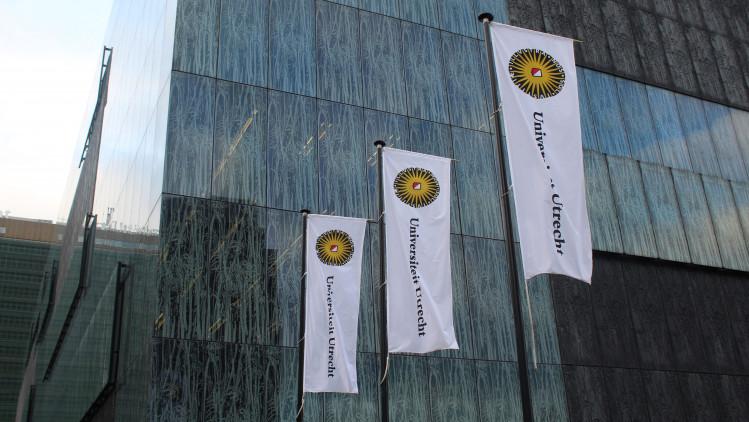UU researchers score six Vici grants

The announcement brings the total number of Vici grants awarded in this round of research funding to 34. The first 12 researchers, from the fields of applied technical sciences and health research and care innovation, got their grants back in February. The pandemic then threw the NWO’s plans into disarray, delaying the announcement for Vici recipients in the fields of the exact and natural sciences, as well as the social sciences and humanities.
The Vici grant will enable these researchers to fund their projects for five years. The projects acknowledged range from “galaxies' first steps” to “the welfare state of tomorrow”.
Awards percentage
The Vici grant is aimed at advanced researchers and is awarded on an annual basis. A total of 306 applications were submitted for this round, 34 of which were awarded.
Most of the applications came from men (65.7 percent), which is reflected in the allocation: 24 Vici grants have gone to male candidates and 10 to female candidates. This represents a success rate of 11.9 percent for men and 9.5 percent for women.
Coincidental
In the field of health research and care innovation, none of the 23 female candidates are among the six winners. NWO assures that this is ‘’entirely coincidental’’. Two years ago, for example, grants were awarded to six female candidates and not a single male in this field.
The highest success rate is to be found in the applied technical sciences, where 15.8 percent of the applications came through the selection procedure. Grants in this field were awarded to two of the eight female candidates (25 percent).
In totaal zijn deze toekenningsronde 34 Vici-beurzen uitgereikt. De eerste 12 onderzoekers uit de domeinen toegepaste technische wetenschappen (TTW) en gezondheidsonderzoek en zorginnovatie (ZonMw) kregen in februari al een beurs toebedeeld. Het coronavirus gooide de planning van NWO overhoop, waardoor vandaag pas bekend werd welke wetenschappers uit de domeinen ‘exacte en natuurwetenschappen’ (ENW) en de ‘sociale en geesteswetenschappen’ (SGW) een Vici-beurs krijgen.
Met de beurs kunnen de wetenschappers vijf jaar lang onderzoek doen. De onderwerpen lopen uiteen van “de eerste stappen van sterrenstelsels” tot “de verzorgingsstaat van morgen”.
In February, two UU professors received a Vici grant: cancer researcher Jacco van Rheenen and professor of Regenerative Orthopedics Marianna Tryfonidou.
In this round, six UU researchers have been awarded: philosopher Ingrid Robeyns, memory specialist Stefan van der Stigchel, art historian Thijs Weststeijn, immunologist Esther Nolte – ’t Hoen, cell biologist Lukas Kapitein, and chemist Pieter Bruijnincx. See the box below for an explanation of their projects.
Distribution of the 22 Vici grants per university:
Universiteit Utrecht | 6 |
Rijksuniversiteit Groningen | 3 |
Universiteit Leiden | 2 |
Universiteit van Amsterdam | 2 |
TU Delft | 2 |
Radboud Universiteit | 2 |
Universiteit Maastricht | 1 |
Wageningen Universiteit | 1 |
Leiden Universitair Medisch Centrum | 1 |
Radboud Universitair Medisch Centrum | 1 |
Vrije Universiteit Amsterdam | 1 |
Visions for the Future - Ingrid Robeyns
The current socio-economic system leads to a series of problems, such as ecological overexploitation and rampant inequality. Some of the alternative visions proposed for the future include the doughnut economy, the welfare economy, the common good economy, and the basic income society. But how can we compare and evaluate these proposals? This project will develop a framework to make that comparison possible. After that, the proposed visions will be subjected to a normative analysis, and the researchers will look for hybrid or new visions.
Differences in attention – Stefan van der Stigchel
Attention determines what you get from the world. However, we know little about individual differences in the way we view the world. This study will map these differences and use the knowledge to better diagnose and treat attention problems.
The Worldly Century - Thijs Weststeijn
The so-called “golden” age of Dutch art has a striking number of non-Western characteristics, from the Islamic headscarf of Vermeer's Girl with a Pearl Earring to Rembrandt's Chinese porcelain. The project examines how art contributed to the emergence of a global worldview and analyzes the current global relevance of Dutch Old Masters.
The Janus face of extracellular vesicles in host-virus interactions exposed - Esther Nolte-'t Hoen
Cells communicate by exchanging tiny vesicles with information encoded in proteins and genetic material. Viruses appear to exploit this form of communication. The researcher will investigate how these blisters help to spread viruses or, on the contrary, betray the virus.
Movement in nerve cells - Lukas Kapitein
The extensions of nerve cells, axons, wire our nervous system. Their extreme length is possible thanks to motor proteins that transport building blocks along protein tubes. Disruption of this process can lead to disease. This research will use new microscope techniques to unravel the road system and traffic rules in axons in healthy and diseased tissue.
A new circular blueprint for chemical building blocks and materials – Pieter Bruijnincx
To address the energy and resource crises, we need to meet our demand for carbonaceous materials differently. This project will put circularity at the heart of the molecular blueprint of everyday chemical building blocks and materials and develop new ways to produce them in a sustainable way.